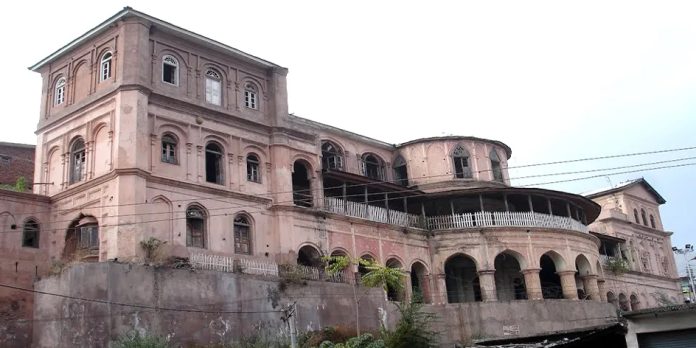Jammu and Kashmir is a land steeped in history, boasting a rich tapestry of cultures and civilizations. This heritage is embodied in the state’s numerous monuments and silent sentinels that speak volumes about the region’s past. Preserving our cultural heritage is not just a matter of pride; it’s a responsibility we owe to future generations. Yet, recent reports of encroachments, illegal construction, and administrative neglect inside several state-protected monuments across the Jammu region paint a bleak picture of the state of our heritage sites. The report serves as a clarion call to action, urging all stakeholders to prioritise the restoration and preservation of these invaluable treasures before irreparable damage occurs.
From the Shahi Mughal Masjid in Nowshera to the Poonch Fort and beyond, instances of encroachment and illegal construction not only violate legal protections but also erode the very fabric of our cultural identity. These monuments, declared state-protected monuments under various statutes, are emblematic of our rich history and architectural prowess. However, their dilapidated condition speaks volumes about the collective apathy towards their upkeep. The plight of the Dhanidhar Fort in Rajouri district is particularly distressing. Despite being designated as State Protected Monument for over a decade, it remains inaccessible due to its occupation by security forces. Such disregard for heritage preservation is unacceptable and warrants immediate remedial action. Likewise, encroachments on the premises of Temple Samadhi Chadai Muttal and Bahu Fort underscore the need for stringent enforcement of heritage protection laws.
Furthermore, the operation of schools within the premises of Jaganoo Fort and Samba Fort represents a blatant disregard for their historical significance. The repeated requests for relocation by the Directorate of Archives, Archaeology, and Museums have fallen on deaf ears, highlighting systemic failures in ensuring compliance with preservation mandates. The lack of forest clearance for restoration work at Buddhist site, Godha Gali, and Thein Fort further exacerbates the challenges facing heritage conservation efforts. Delays in procedures not only hinder progress but also jeopardise the integrity of these ancient sites. The delays in the restoration process allow further deterioration to take place. All relevant authorities must expedite the requisite approvals to commence restoration work without further delay.
At the heart of this crisis lies a fundamental disconnect between legislative mandates and on-the-ground implementation. While the Ancient Monuments Preservation and Conservation Act provides a robust legal framework for heritage protection, its efficacy hinges on proactive enforcement and inter-agency collaboration. Deputy Commissioners must assert their authority to safeguard these monuments against encroachment and degradation, holding violators accountable for their actions.
Jammu and Kashmir’s State Protected Monuments are not mere structures; they are testaments to our rich heritage, serving as vital links to our past. They hold immense cultural, historical, and educational value. Allowing them to crumble due to neglect or encroachment is a disservice to future generations. In light of these pressing concerns, the department has reiterated its commitment to escalating the issue to the highest levels of administration, which is commendable. Transparent monitoring mechanisms should be established to track progress and address bottlenecks in heritage restoration initiatives.
The preservation of cultural heritage is a shared responsibility that transcends bureaucratic boundaries and political affiliations. It is incumbent upon all stakeholders-Government agencies, civil society organisations, and citizens alike-to put forth united efforts to safeguard these invaluable treasures for posterity.
Trending Now
E-Paper


